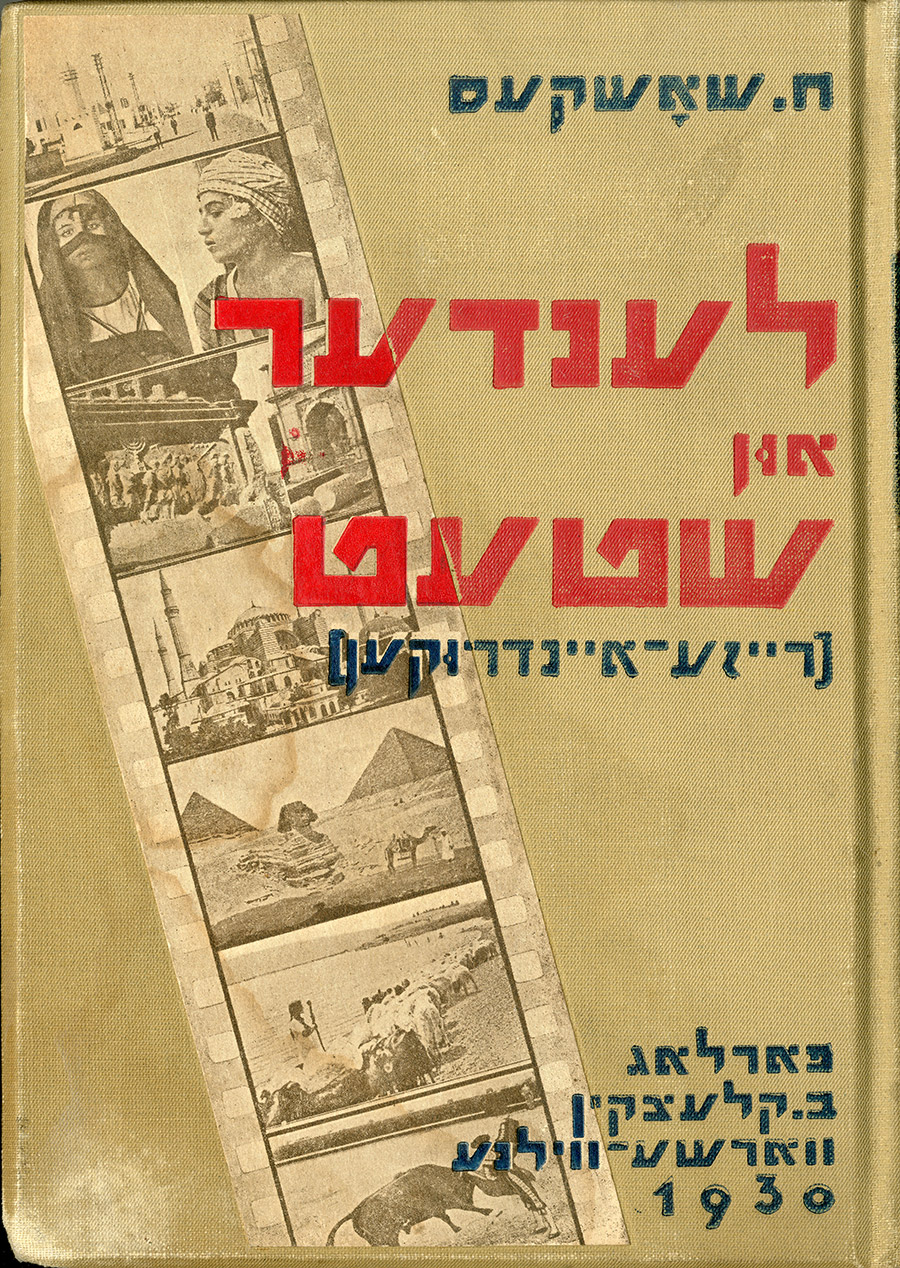In the introduction to his 1954 book Durkh umbakante lender Hayyim Shoshkes relates a childhood memory of the family gathered over dinner and listening to his father read aloud from a newspaper report about the latest skirmishes in the Spanish-American War. The six-year-old future travel writer was particularly taken by the account of Cuba's beauty and the illuminated entryway to Havana
At night I dreamed that my wooden horse that stood right next to my bed, took on another form, became large and began to move. . . . Wings sprouted from the horse's back and it became like a creature called Pegasus found in my picture book. I sit on him and he carried me to unfamiliar Cuba, I am lifted higher and higher and fly over the ruins of the Land of Israel and the temples of Baghdad, the city of my storybooks. . . . I fly ever farther, cut through a forest filled with wild animals and jump up with a frightful scream. . . . Next to me stands my father, holds and comforts me. I tell him my dream and he says: "That means, my child, that you will sprout wings, you'll travel a lot, you'll see a great deal! This was a good dream, you have nothing to be afraid of."
Avraham Shoshkes's prophecy did come to pass and for a good forty years his son Hayyim or Henry Shoshkes
Shoshkes's literary talent was undiluted, his writerly ambitions entirely devoted to journalism. But what most distinguishes Shoshkes's oeuvre from Hirshbein's is how closely tied his journeys were to Jewish relief work, and how preoccupied the writing to the social, political, and economic situation of Jews far removed from the center of their people's lives
Lender in shtet is Shoshkes's first compilation, based on travel accounts he wrote between 1924 and 1927. The book is divided into nine sections each devoted to a different region and begins with a five short pieces on the World Exposition in Wembley. Included in the book are reportages that appear over and again in his writings
